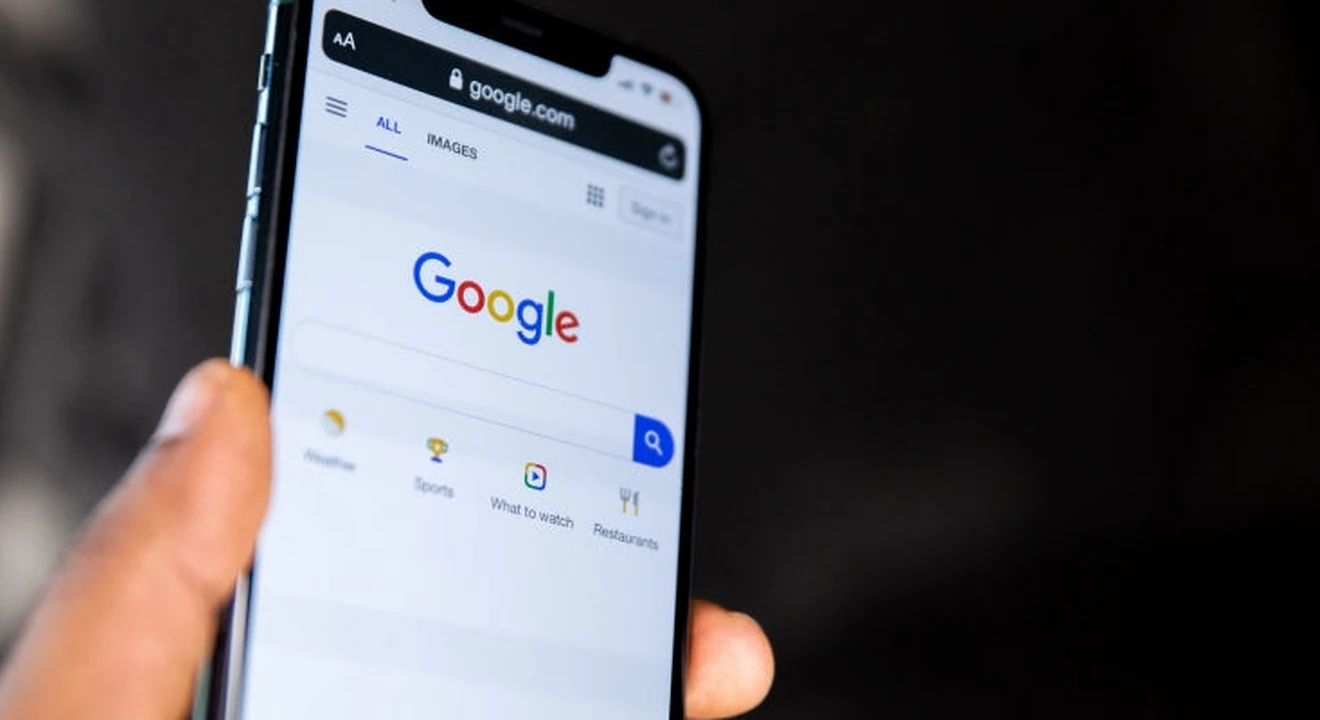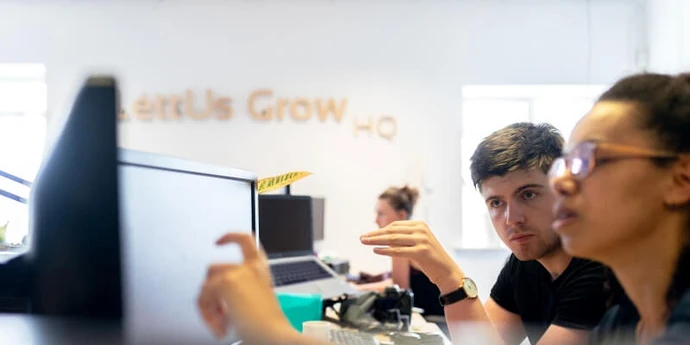If you’re interviewing for a tech role at Google or Google Cloud, the behavioral round is one of the main types of interviews you’re going to need to crack. As the questions may not seem difficult when compared with their technical counterparts, candidates frequently overlook them.
However, these open-ended questions are important for interviewers to find out if you’re a good fit for Google. So you’ll want to prepare for these questions and use them to distinguish yourself from other candidates.
To help you, we’ve created this interview prep guide to give you everything you need to know to prepare for Google’s behavioral interview, including example questions, how to answer, and a practice plan to make sure you land your dream job at Google.
Here’s a brief overview of what we’ll cover.
- What is a behavioral interview at Google?
- 40+ Google behavioral interview questions
- How to answer Google behavioral interview questions
- How to prepare for a Google behavioral interview
Click here to practice 1-on-1 with ex-Google interviewers
1. What is a behavioral interview at Google?
Google uses behavioral interviews to assess job candidates based on their past experiences. These questions typically start with “Tell me about a time you…” and focus on soft skills such as: leadership, communication, teamwork, problem solving, etc.
To round out your preparation, we've also included some resume, HR, and hypothetical questions such as "what are your strengths and weaknesses?" or "how would you...?" in this article. As these are real questions that have been reported by past candidates, we want to make sure you're ready for anything.
These questions will appear at every step of the interview process at Google and Google Cloud Platform, from the initial recruiter screen all the way through to the onsite interviews. They may even appear as icebreaker or transition questions during technical screens. The frequency and type of behavioral questions will vary per role, but be prepared for many.
For more information on the process for a specific role, consult one of our comprehensive interview guides below:
- Google product manager
- Google associate product manager
- Google product marketing manager
- Google program manager
- Google technical program manager
- Google software engineer
- Google engineering manager
- Google system design interviews
- Google data scientist
- Google (technical) account manager
- Google machine learning engineer
- Google data engineer
- Google site reliability engineer
- Google strategy and operations
- Google L4 engineer
If you're currently a Googler preparing for your internal transfer interview, check out our guide to Google internal transfers to learn more about the process.
Now, what will your interviewers be looking out for?
1.1 What is Google looking for in a candidate?
An interviewer at Google will be looking for candidates who meet their four main attributes:
- General cognitive ability. This is often referred to as "GCA" by Googlers. The company wants to hire smart employees who can learn and adapt to new situations. Here your interviewer will try to understand how you solve hard problems and how you learn. For more information, take a look at our guide to the Google GCA interview.
- Role-related knowledge and experience. This is often referred to as "RRK" or "RRKE" internally. The company wants to make sure that you have the right experience, domain expertise, and competencies for the position you're applying for. For more information, take a look at our guide to the Google RRK interview.
- Leadership. Google looks for a particular type of leadership called “emergent leadership.” You'll typically be working in cross-functional teams at Google, and different team members are expected to step up and lead at different times depending on when their skills are needed.
- Googleyness (i.e. culture fit). The company wants to make sure Google is the right environment for you. Your interviewer will check whether you naturally exhibit the company's values, including being comfortable with ambiguity, having a bias to action, and having a collaborative nature.
In the next section, we’ll show you some of Google’s top behavioral questions so that you can get an idea of what you’re up against.
2. 40+ Google behavioral interview questions
Now that you’ve gotten an idea of what to expect during the Google interview process, let’s jump into some example questions.
To help you prepare strategically for your job interview, we have used Glassdoor data to identify the real questions asked in different Google interviews. The questions we’ve chosen come from our research on five Google tech roles: product manager, software engineer, program manager, account manager, and data scientist. We’d recommend reading one of these comprehensive interview guides if you’re applying for one of these roles in particular.
You’ll notice that we’ve divided the questions into the following categories:
- General
- Teamwork
- Leadership / people management
- Project management
We've added these categories to make the list of questions easier to understand, starting with the general questions that apply to any job. Each category tests a different quality that Google is looking for in its candidates, and the frequency of each question type will vary depending on the role. For instance, interviews for managerial roles will include a higher number of leadership / people management questions.
Note that we've edited the language in some of the questions for clarity or grammar. Now let’s get into it.
2.1 Google behavioral questions: General
First up are the general behavioral questions that may come up for any role. Here your interviewer is looking for an overall view of your past experiences and what you will be like as an employee at Google. You’ll see that regardless of the role, Google is curious about your resume, your motivations, and why you want to work for them specifically.
These are good questions for you to demonstrate your “Googleyness” by showing such qualities as comfort with ambiguity or a bias for action. They want to see that you’ve learned from past mistakes and that you’ve done your research on Google itself.
Practice demonstrating those values using the questions below.
Example behavioral questions asked at Google: General
- Why Google?
- Tell me about yourself
- Tell me about this [past related project] that you worked on
- Tell me about a challenge or conflict you faced at your past/current job. How did you handle it?
- Tell me about a time you had to change
- Tell me about a time when you had to come up with a creative solution to solve a problem.
- Tell me about a time you created something from nothing
- Tell me about your biggest achievements in your past work
- Tell me about the last time you failed, and what happened
- Tell me about your favorite Google product
- Tell me about the skills that you possess that will help you succeed in this role
- Why this position? Where do you see your career moving?
- Why are you leaving your former position?
- What are your strengths and weaknesses?
- What makes a good [job title]? What makes a bad [job title]?
- If you had coffee with Sundar Pichai what would you talk to him about?
2.2 Google behavioral questions: Teamwork
Many employees at Google have to work in cross-functional teams with other engineers, product managers, PMMs, data analysts, etc. You’ll need to be able to communicate clearly, work with others efficiently, and build trust and relationships.
Your interviewer will be looking for you to share stories from your past experience that demonstrate a spirit of collaboration and partnership. Give it a try using the following questions.
Example behavioral questions asked at Google: Teamwork
- Tell me about how you work with difficult people/stakeholders
- Tell me about a time you worked on a cross-functional team
- Tell me about a time you had to resolve a conflict in a team
- Do you prefer working in small or large teams?
- Define your ideal work environment and manager
- How would you deal with a coworker who you notice is isolating themself from the larger group?
2.3 Google behavioral questions: Leadership/people management
In addition to a collaborative nature, Google is looking for employees who demonstrate emergent leadership. This is because most roles will involve not only working in teams, but also leading them when appropriate.
As a result, you should expect questions about your approach to developing and retaining team members, your ability to lead teams through difficult situations, how you resolve conflict, etc. Of course, expect these questions to come up more frequently when interviewing for a managerial or leadership position.
Example behavioral questions asked at Google: Leadership/people management
- Tell me about a time you demonstrated leadership even though you weren't the formal manager
- Tell me about a time you led a team through a difficult situation
- Tell me about a time you developed and retained team members
- Tell me about a time you had to handle trade offs and ambiguity
- Which traits differentiate a manager from a leader, and how do you rank yourself as a leader on those traits?
- How would you deal with a team challenge in a balanced way?
- How would you address a skill gap or personality conflict?
- How would you ensure your team is diverse and inclusive?
2.4 Google behavioral questions: Project management
Finally, you may be asked one or multiple project management questions, which dive into your productivity and how you would effectively lead projects end-to-end. Some of these questions are specific to certain roles, such as “how do you run your product lifecycle?” for product managers.
If you’re interviewing for a position that will entail managing and leading project teams, then expect questions about your overall project management philosophy, your ability to deal with complex and ambiguous situations, and your experience delivering results.
Right, now let’s get into some questions.
Example behavioral questions asked at Google: Project management
- Tell me about a time you had to handle a project that was late
- Tell me about a time you were the end-to-end owner of a project
- Tell me about a time you used data to make a critical decision
- Tell me about a time you used data to measure impact
- Tell me about a time you improved a process at one of your previous workplaces
- How will you go about doing this job for the first 90 days?
- How would you handle competing visions on how to deliver a project?
- How would you choose a methodology to manage a project?
- How would you balance flexibility and process in an agile environment?
- How do you sort your priorities when engaged in multitasking?
- How do you make product decisions? How do you run your product lifecycle? (product manager question)
3. How to answer Google behavioral interview questions
Now that you’ve seen some of Google’s top questions, let’s work on a technique for answering them.
3.1 Technique
When answering behavioral questions, you should focus on your most relevant achievements and communicate them in a clear way. An easy way to achieve this is to use a step-by-step method to tell your stories.
The STAR method (Situation, Task, Action, Result) is a popular approach for answering behavioral questions because it’s easy to remember. You may have already heard of it. However, we’ve found that candidates often find it difficult to distinguish the difference between steps two and three, or task and action. Some also forget to include lessons learned in the results step, which is especially crucial when discussing past failures.
So we’ve developed the IGotAnOffer method to correct some of the pitfalls we’ve observed when using the STAR method.
3.1.1 The IGotAnOffer method
Let’s step through our suggested five-step approach:
- Situation: Start by giving the necessary context of the situation you were in. Describe your role, the team, the organization, the market, etc. You should only give the minimum context needed to understand the problem and the solution in your story. Nothing more.
- Problem: Outline the problem you and your team were facing.
- Solution: Explain the solution you came up with to solve the problem. Step through how you went about implementing your solution, and focus on your contribution over what the team / larger organization did.
- Impact: Summarize the positive results you achieved for your team, department, and organization. As much as possible, quantify the impact.
- Lessons: Conclude with any lessons you might have learned in the process.
You’ll notice that this method covers very similar themes to the STAR method. We like it because a lot of the candidates we work with find this framework easier to use, as there’s no overlap between any of the steps in your story.
For a deeper dive into this topic, check out our article on why the STAR method isn’t always the best for behavioral interviews and how IGotAnOffer's SPSIL method can be a better option. It was written with product managers in mind, but applies just as well to any role.
Ultimately, you should practice using whatever method you’re the most comfortable with. If you’d like to start practicing right away, jump back to the full list of questions here.
Otherwise, to get a better idea of how our method works, work through the example below.
3.2 Example answer: Tell me about a challenge or conflict you faced at a past job
Now that you know some approaches for answering behavioral questions, let's look at a full example. We’ll use one of Google’s most frequently asked questions.
Try answering the question below following your preferred method. Play both the role of the interviewer and the candidate. Write down your answer, then practice saying it out loud before going through our example response. Once you’ve finished, compare your response to our example to fill in any gaps in your story.
Try this question:
Tell me about a challenge or conflict you faced at a past job
Answer:
We’ll use the IGotAnOffer method described above and answer as if interviewing for a product manager job at Google. You will find our proposed answer to the question below.
Notice that the question asks for a past challenge OR conflict, which lets you choose what you’d like to highlight in your answer. If you choose a past challenge, this would be a good way to show off your leadership and problem-solving skills. However in this case, we’ve chosen to focus on a past conflict, which we’ll use to display conflict-resolution and collaboration skills.
For a sample answer to the past challenge question instead, take a look here.
1. Situation
As this question isn’t necessarily about a specific role, it allows you to describe a variety of situations. We’ll use a generic example, but you should of course use an example from your own work experience.
You could start by saying something like, “In my past job, I was on a product team composed of coworkers from various functional areas of our company. I had recently been hired, so this was my first interaction with the team. Eager to get to know everybody and to contribute to the project, I frequently jumped in with ideas and volunteered to lend a hand in many tasks.“
Without giving too much detail, this gives a quick sense of the setting you were in. If relevant, you can add a sentence or two to define your team’s goal, the functional areas present, or the stakeholders. Either way, the scene is set to get into the conflict that will arise when you describe the problem.
2. Problem
After you outline the situation, you can explain the problem by saying something like, “I began to notice in our team meetings that one of my coworkers began cutting me off when I presented ideas. Later, when I volunteered to help with a task that concerned his functional area, he neglected to give me the information and resources I needed in order to contribute. This behavior continued, causing a conflict that interfered with our team discussions and slowed down our progress on important tasks.”
Here, you haven’t spent too long discussing the situation and problem, but your answer so far has given the interviewer a clear sense of the setting and conflict you faced.
3. Solution
When describing the solution you came up with to solve the problem, it’s important to step through your thinking. And it’s especially important to focus on YOUR contribution.
You could say something such as, “I knew any conflict was detrimental to the team’s goals, so I wanted to squash it right away. My first step was to examine my own behavior to understand how it may have sparked the conflict. I determined that my eagerness to contribute to the discussions and project may have overstepped some bounds.
My next step was to meet with my coworker. I approached him and asked to set a meeting for just the two of us. I let him choose the time, so as not to unintentionally interrupt his workflow.
Next, we held our discussion. I politely expressed how his behavior was preventing me from speaking up in meetings and helping with important tasks, then asked if I had overstepped any boundaries in my first few weeks on the team. He agreed, explaining that my initial eagerness had taken up too much time in the meetings, giving him and others less of an opportunity to present their teams’ work. Also, when I volunteered to help in his functional area, it slowed him down to have to explain the processes to me.
First, I apologized for my initial behavior. After he accepted my apology, I then presented a plan for upcoming meetings to avoid further conflict: I would be more attentive to the time I spent speaking in meetings and would only volunteer for tasks when I was confident I was well equipped to contribute. In exchange, I requested that he approach me in case further issues arise, instead of closing me off from discussions or projects. He agreed.”
Let’s take a step back and look at what you’ve highlighted with this answer. It emphasizes your ability to admit your own mistakes and resolve them. It also shows your efforts toward clear communication and conflict resolution.
A key aspect of Googleyness is a collaborative nature, so that cross-functional teams, such as the one in this example, can work together smoothly. A story like this highlights your ability to face issues head-on, before they turn into a larger problem for the team.
4. Impact
After explaining the actions you took, it’s a good idea to quantify how much impact you had.
You could say something like, “After I met with that coworker, we each adjusted our behavior and avoided further conflict all the way through to the end of that project. We were able to catch up on the delays we were beginning to incur with our communication issues, finishing the project on time and meeting our initial goals.”
5. Lessons
Finally, wrap up your answer by describing any lessons you might have learned.
You could say, “Thankfully, this all happened right at the beginning of my time with that company, and the rest of my time there went smoothly. It taught me to be much more receptive to coworkers’ feedback and work to keep my contributions quick and to the point in meetings. Also, it taught me to address issues as soon as they arise, as we were able to move on from that conflict very quickly instead of allowing it to grow into a larger problem.”
3.2.1 Example answers: top 5 Google behavioral questions
Watch the video below for more best-in-class answers to common Google behavioral questions, like "tell me about yourself?" and "Why Google?". These are important questions to practice for, as they don't follow a specific framework.
Click here to read more example answers to typical Google behavioral questions.
3.3 Tips to impress your interviewer
Finally, before we move on to some interview prep resources, we'd like to give you five helpful tips to keep in mind.
Tip #1: Get used to setting up the situation in 30 seconds or less
Use a timer while you practice to ensure you provide only necessary information. Spending too much time on the Situation step is one of the most common mistakes candidates make.
Tip #2: Stay focused on essential details
Interviewers hear a lot of behavioral stories a day. If you go into unnecessary details you are likely to lose their attention. Share your stories with a few different people before your interview and ask them what details they would suggest cutting.
Tip #3: Be proud and talk about YOU
This is not the time to be shy about your accomplishments. Concentrate on your impact, not what “the team” did. Not talking about YOU enough is another common mistake we see with a lot of candidates.
Tip #4: Adapt to follow up questions
Don’t be alarmed if your interviewer asks follow up questions; this is perfectly normal. Listen carefully to the way your interviewer is asking these questions, as there will often be a subtle clue about the specific skills they’re looking to assess from the next part of your answer.
Tip #5: Explain how failure made you better
When talking about failure, don’t try to hide your mistakes or frame a weakness as a strength. Instead, show what you learned and how you grew from the failure.
4. How to prepare for a Google behavioral interview
Right, now that we’ve been through all the questions and the techniques you can use to answer them, we’d like to offer some resources to help you prepare. After all, the right preparation will make the difference between failing your Google interviews and getting an offer.
Here are three steps that you can take to help you prepare for your Google or GCP behavioral interview.
4.1 Learn about Google’s culture
Most candidates fail to do this. But before investing tens of hours preparing for an interview at Google, you should take some time to make sure it's actually the right company for you.
Google is prestigious, and it's therefore tempting to assume that you should apply, without considering things more carefully. However, it's important to remember that prestige alone won't make you happy in your day-to-day work. What will make you happy is what you’ll actually be doing as well as the people you'll be working with.
If you know people who work at Google or used to work there, talk to them to understand what the culture is like. In addition, we would recommend reading the following resources:
- Google's mission statement (by Google)
- Google's values (by Google)
- Google strategy teardown (by CBS Insights)
- Google's company blog (by Google)
4.2 Practice by yourself
Acing a behavioral question is much harder than it looks. You’ll stand out if you put in the required work to craft concise and direct answers.
4.2.1 Write down your stories
First, work out which stories you’d like to tell. Make a list of key moments in your career (e.g. accomplishments, failures, team situations, leadership situations, etc.) that you can use to answer one or multiple questions. Take a look at Google’s four main attributes and their core values, then find at least one story from your past that exemplifies each one.
After you’ve finished your list, write out a story for each key moment in your career using the structure we've laid out in section 3. Be sure to emphasize your impact in each of these examples, quantify the results of your actions, and explain the lessons you learned from the experience.
Once you have a bank of stories, go through the questions in section 2 and make sure you’d be able to answer all of them either by using one of the stories you’ve written directly, or by adapting it on the fly. If you identify any gaps, add stories to your bank until you’re comfortable you can cover all the questions listed in this article.
Click here to practice with more common behavioral questions and see example answers
In some instances, Google might phrase a question in the hypothetical to test your ability to think on your feet. Click here to learn more about Google's hypothetical interview questions.
4.2.2 Practice your stories out loud
After you've written everything down, a great way to practice your answers is to interview yourself out loud. This may sound strange, but it will significantly improve the way you communicate during an interview.
You should be able to tell each story naturally, neither missing key details nor memorizing them word-for-word.
Play the role of both the candidate and the interviewer, asking questions and answering them, just like two people would in an interview. Trust us, it works.
4.3 Practice with peers
Practicing by yourself will only take you so far. By yourself, you can’t simulate thinking on your feet or the pressure of performing in front of a stranger. Plus, there are no unexpected follow-up questions and no feedback.
That’s why many candidates try to practice with friends or peers. If you have friends or peers who can do mock interviews with you, that's an option worth trying. It’s free, but be warned, you may come up against the following problems:
- It’s hard to know if the feedback you get is accurate
- They’re unlikely to have insider knowledge of interviews at your target company
- On peer platforms, people often waste your time by not showing up
For those reasons, many candidates skip peer mock interviews and go straight to mock interviews with an expert.
4.4 Practice with experienced Google interviewers
In our experience, practicing real interviews with experts who can give you company-specific feedback makes a huge difference.
Find a behavioral interview coach so you can:
- Test yourself under real interview conditions
- Get accurate feedback from a real expert
- Build your confidence
- Get company-specific insights
- Learn how to tell the right stories, better.
- Save time by focusing your preparation
Landing a job at a big tech company often results in a $50,000 per year or more increase in total compensation. In our experience, three or four coaching sessions worth ~$500 significantly impact your ability to land the job. That’s an ROI of 100x!















